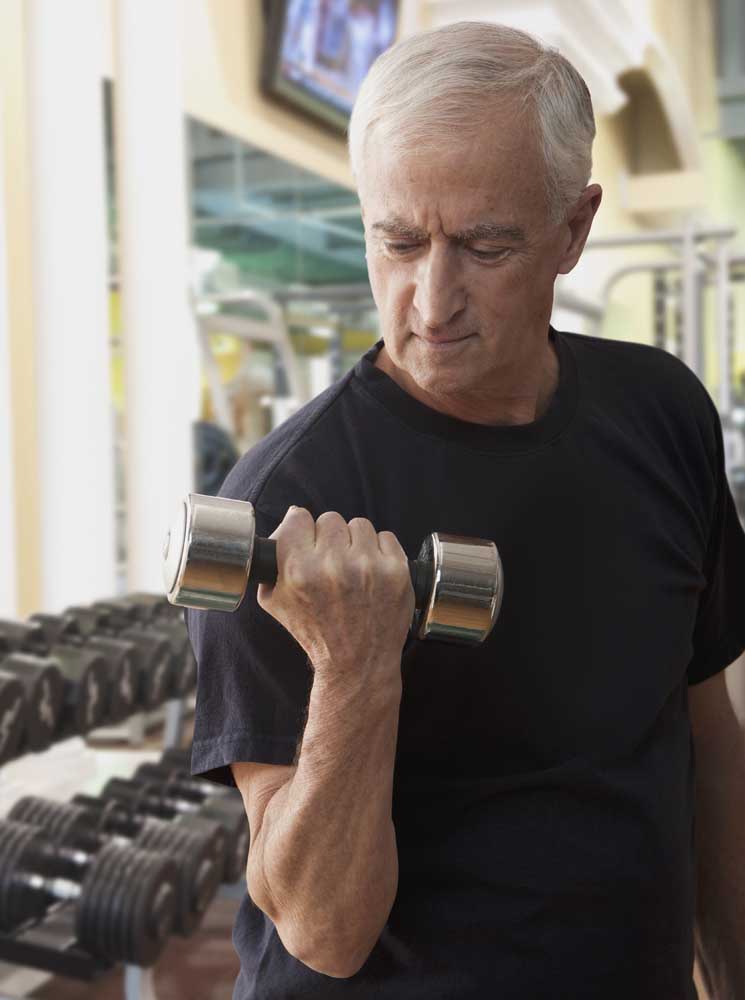Keeping Fit: Training guidelines for the over-50 lifter
Published 2:00 pm Sunday, January 29, 2023

- Weightlifting can be one of the safest, most efficient and productive forms of exercise any individual over 50 has ever experienced.
“Pumping Iron” has come of age — from an activity practiced by a fringe minority in the 1960s and 1970s to today, with strength training being recommended for everyone from young athletes to grandmas.
The early practitioners themselves are now grandparents, but too many suffer from regular pain in their joints or have lost significant muscle — not just from aging — but because of lost function from shoulder, hip, knee and other surgeries from overzealous bodybuilding.
Trending
It was once thought that older people should not exert themselves too much or they will strain their heart or hurt themselves, but study after study has shown that weightlifting is good for cardiovascular health, reduces diabetes risk, improves arthritis symptoms, builds back muscle and more. Nevertheless, if done improperly, exercising with weights can cause muscle strains, joint and tendon dysfunctions or other injury. So how can we gain all the benefit, while minimizing, or hopefully eliminating, the risk? Glad you asked! Here’s what we’ve learned over the years:
1. Steer clear of most barbell exercises.
I’ve loved bodybuilding from my youth when you would buy workout courses from the back of comic books — so it’s not easy for me to give this first guideline! But as I approach my mid-50s myself, train others and have learned my lessons from those who have gone before me, I can promise you that weight machines, dumbbells and cables can provide virtually all of the benefit of barbells without the risks.
They are biomechanically friendlier and dumbbells and cables in particular allow you to find a range of motion and movement pattern that suits your particular frame to a tee. In general, if you prize feeling good over lifting big weights for your ego — lay off the bench press, deadlift, squat and other pressing and pulling moves with a barbell. They are not needed.
2. Limit your range of motion.
When performing a leg press or chest press, or any pushing exercise, stop about 10 to 15 degrees before your limb is fully straightened, come to a full stop and smoothly reverse direction. Similarly, when lowering the weight in any exercise, do not overstretch by allowing the weight to push or pull you into a vulnerable joint position. For example, when doing a chest exercise, many allow the weight to push their arms back behind them as far as possible. When done repetitively for years this destabilizes the joint and causes bad wear and tear issues. The ends of a muscle are the weakest and most vulnerable to injury. Stop a good 10 to 15 degrees from the fully straightened or stretched position to protect your joints.
Trending
3. Don’t heave, jerk or yank weights.
Your mantra should be “smooth and controlled.” It takes a full four seconds to dissipate the stretch reflex in your tendons and muscles and eliminate momentum from taking over in your lifting. So lower weights slowly to a count of four or else lower a bit quicker but still under control and pause for a second or two before smoothly reversing direction. It is the turnaround where you stop lowering a weight and then lift up again where most injury occurs. Jerking, yanking or bouncing to try and get one more repetition and “cheat” the rep up are dangerous moves. If you value your joints, abandon them.
4. Work hard but not too hard.
Weight training is a high intensity activity and as such you can reap all the benefits by training hard just three days a week. In fact, I’ll go further and say I’ve seen no benefit to training the same move hard more often than once a week! You can still train other moves, or the same move with less intensity, but the risk to benefit is not there for more frequent hard training. You should have a sensible plan that matches hard efforts with sufficient recovery and even a week off every now and then to allow the body to rest and heal.
Weightlifting can be one of the safest, most efficient and productive forms of exercise any individual over 50 has ever experienced. By taking the above guidelines into careful consideration and adopting them, you can enjoy many safe years of training and a more abundant healthy life.





